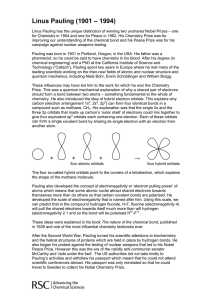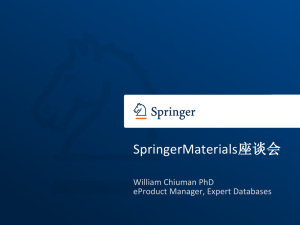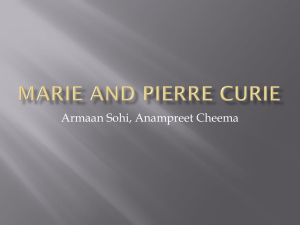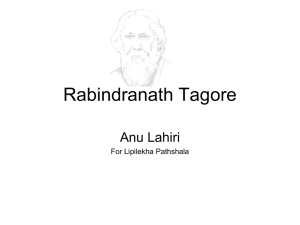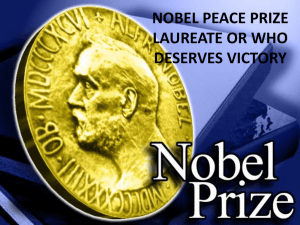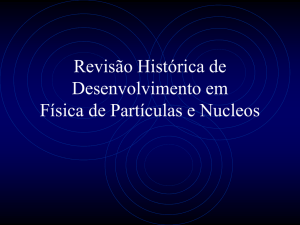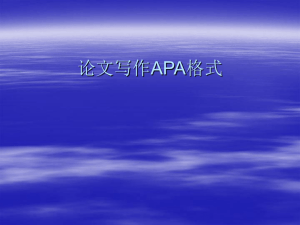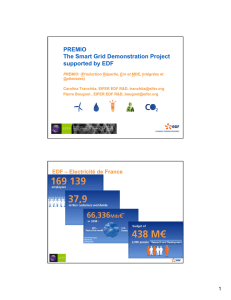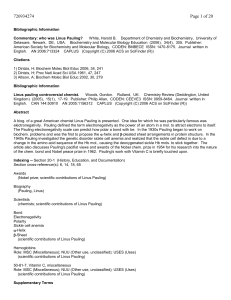El concepto de macromolécula surgió naturalmente a principios del
advertisement
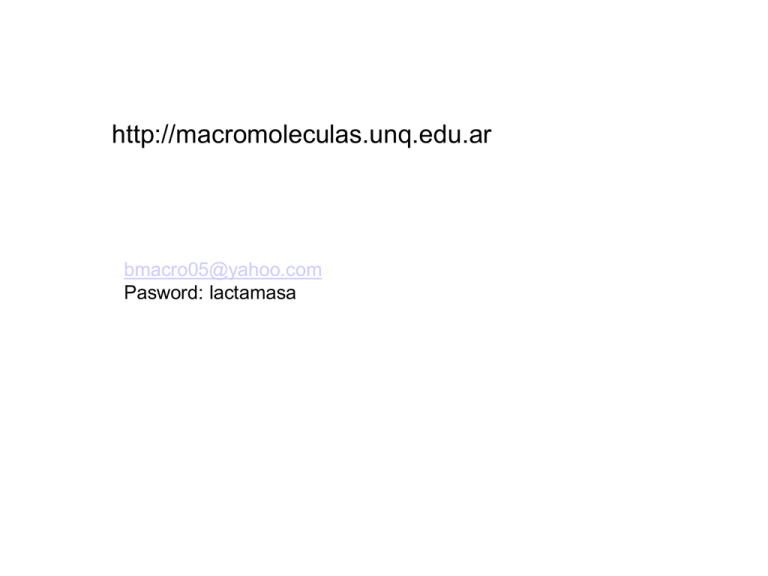
http://macromoleculas.unq.edu.ar bmacro05@yahoo.com Pasword: lactamasa Friedrich August Kekule (1829-1896) El concepto de macromolécula surgió naturalmente a principios del siglo XIX Eduard Pfluger 1875 Teoría de la respiración intracelular Biuret Análisis elemental: en 300 g de hemoglobina hay 1 g de hierro Fórmula mínima: 1 mol de hemoglobina por mol de hierro (16000 g de hemoglobina por 52 g de hierro) Peso Molecular: n16000 Emil Fischer (premio Nobel 1902) Las proteínas están constituídas por péptidos de hasta 30 residuos Existen unos treinta aminoácidos naturales, por lo tanto los isómeros posibles son 30!=31032 En realidad el cálculo es 3030=31044 La teoría de los biocoloides •Alfred Werner postula la existencia de dos tipos de valencia química •Aparecen los primeros datos de rayos X aplicados a fibras y las celdas unitarias son pequeñas •Aparece la biocoloidología, bautizada como “the dark age” por Florkin El axioma de la biocoloidología fue: El estado coloidal es un nuevo estado de la materia al cual no se aplican las leyes convencionales de la química El debate sobre las macromoléculas Herman Staudinger (1881-1965) Premio Nobel 1953 HE R M A N N S T A U D I N G E R Macromolecular chemistry Nobel Lecture, December 11, 1953 In many instances a polymeric compound can be transformed into derivatives of a different type without any change in the degree of polymerization of the compound in exactly the same way as small molecules can be transformed. A polymer compound can hence be transformed into polymer analogous derivatives, the transformation proving that all the basic molecules contained in the colloid particles of these polymeric compounds are linked together by chief valences, in other words the colloid particles are macromolecules. This proof becomes especially clear because out of a series of polymer homologues various ones can be transformed into polymer analogous derivatives. Theodor Svedberg (1884-1971) Premio Nobel 1926 Complejidad estructural y estrategia de síntesis Síntesis no modular la estructura está acoplada directamente a la síntesis Taxol Síntesis modular síntesis disociada del plegado glutamato sintasa 1 cadena, 1500 residuos, 20000 átomos proteína A 1 cadena, 60 residuos, 900 átomos vitamina B12 (200 átomos) Lawrence Bragg William Bragg Dorothy Crowfoot (1910-1994) Premio Nobel 1964 Cristalografía en la UNQ (LEPP) IA-2 2qt7.pdb armadillo ACBP (2fdq.pdb) ylSCP2 pChP Atsbury under attack Linus Pauling (1901-1994) Premio Nobel Pauling had been practically apolitical until World War II, but the war changed his life profoundly, and he became a peace activist. During the beginning of the Manhattan Project, Robert Oppenheimer invited him to be in charge of the Chemistry division of the project, but he declined saying that he was a pacifist. In 1946 he joined the Emergency Committee of Atomic Scientists, chaired by Albert Einstein, whose mission was to warn the public of the dangers associated with the development of nuclear weapons. His political activism prompted the U.S. State Department to deny him a passport in 1952, when he was invited to speak at a scientific conference in London. His passport was restored in 1954, shortly before the ceremony in Stockholm where he received his first Nobel Prize. Joining Einstein, Bertrand Russell and 8 other leading scientists and intellectuals he signed the RussellEinstein Manifesto in 1955. In 1957, Pauling began a petition drive in cooperation with biologist Barry Commoner, who had studied radioactive strontium-90 in the milk teeth of children across North America and concluded that above-ground nuclear testing posed public health risks in the form of radioactive fallout. He also participated in a public debate with the atomic physicist Edward Teller about the actual probability of fallout causing mutations. In 1958, Pauling and his wife presented the United Nations with a petition signed by more than 11,000 scientists calling for an end to nuclear-weapon testing. Public pressure subsequently led to a moratorium on above-ground nuclear weapons testing, followed by the Partial Test Ban Treaty, signed in 1963 by John F. Kennedy and Nikita Khrushchev. On the day that the treaty went into force, the Nobel Prize Committee awarded Pauling the Peace Prize, describing him as "Linus Carl Pauling, who ever since 1946 has campaigned ceaselessly, not only against nuclear weapons tests, not only against the spread of these armaments, not only against their very use, but against all warfare as a means of solving international conflicts." Interestingly, the Caltech Chemistry Department, wary of his political views, did not even formally congratulate him. However, the Biology Department did throw him a small party, showing they were more appreciative and sympathetic toward his work on radiation mutation. Many of Pauling's critics, including scientists who appreciated the contributions that he had made in chemistry, disagreed with his political positions and saw him as a naïve spokesman for Soviet communism. He was ordered to appear before the Senate Internal Security Subcommittee, which termed him "the number one scientific name in virtually every major activity of the Communist peace offensive in this country." An extraordinary headline in Life magazine characterized his 1962 Nobel Prize as "A Weird Insult from Norway." Pauling was awarded the International Lenin Peace Prize by the USSR in 1970. It is further assumed that each nitrogen atoms forms a hydrogen bond with an oxigen atom from another residue, with the nitrogen-oxygen distance equal to 2.72A, and that the vector from the nitrogen atom to the hydrogen bonded oxygen lies not more than 30 degrees from the N-H direction. Solution of this problem shows that there are five and only five configuración for the chain that satisfy the conditions other than that of direction of the hydrogen bond relative to the N-H direction... 165, 120, 108 97.2, and 70 degrees for the rotational angle... ...the fourth and fifth are satisfactory, the angle between the N-vextor and N-O vector being about 10 and 25 degrees for these two structures, respectively. The fourth structure has 3.69 residues per turn, and the fifth 5.13. Sir William Henry Bragg (1862-1942) Sir William Lawrence Bragg (1890-1971) Premio Nobel compartido 1915 DNA (Bell, Atsbury)

